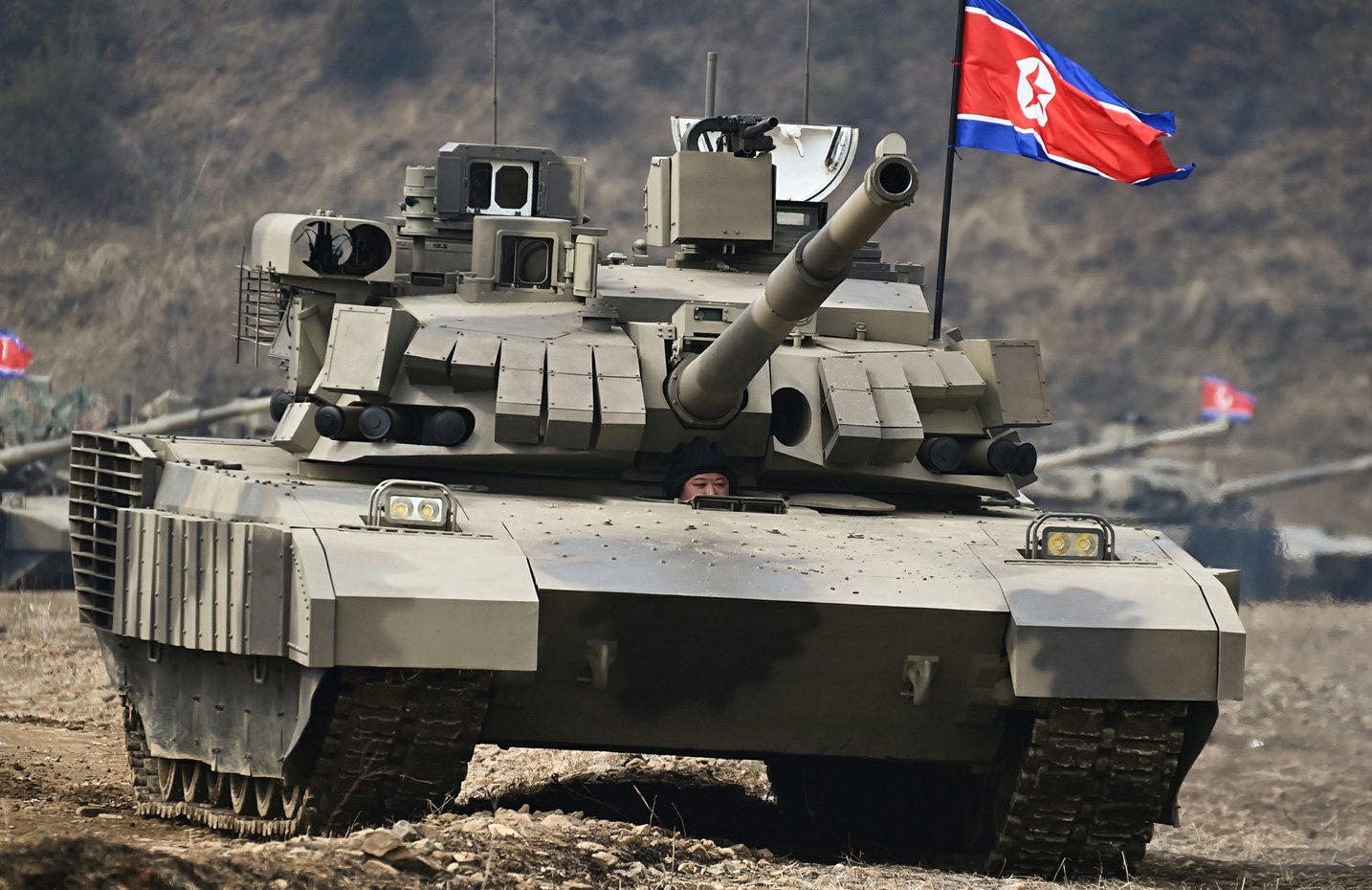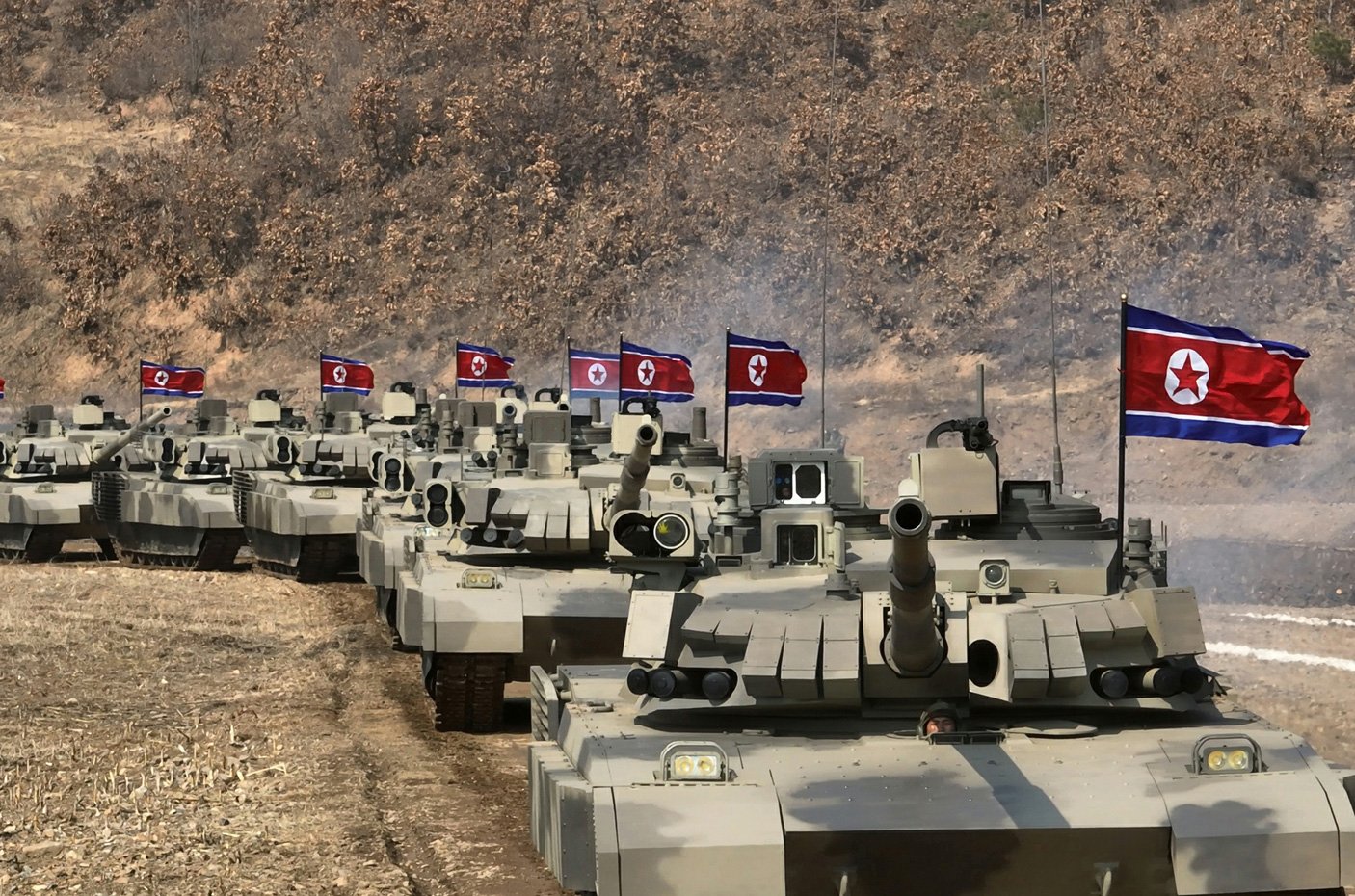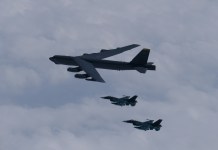North Korea’s new tank features designs and characteristics derived from the lessons learned in the ongoing wars in Ukraine and Gaza. It has a protected top turret and an anti-tank guided missile (ATGM) launcher, which makes for a rare and unusual configuration.
The main battle tank (MBT) is a result of real-time upgrades with seemingly unorthodox designs. These are, however, customized approaches that can conceivably be achieved under a domestic industrial base that is totally cut off from global trade and technology on account of being the most heavily sanctioned country in the world.
Overall, the tank still lags in modern design and possibly electronic systems compared to other tanks like the South Korean K2 Black Panther or the American M1/M2A2 Abrams. However, Pyongyang has come up with a solution suited to its needs as a part of a broader government push to make its defense industry functional under crippling sanctions.
Unveiled During North Korea’s Retaliatory Drills
The tank was unveiled during a military exercise that North Korea was holding in response to the 11-day US-South Korea drills, which the former has always viewed as a preparation for an invasion. Kim Jong-un joined his troops who were training on the new tank and “inspect their capabilities.”
During the training, “heavy tanks moved around various simulated harsh combat circumstances and fired rounds at targets,” according to the Associated Press (AP). Kim then mounted one of the tanks and drove it himself, “adding to the high militant spirit of the tankmen of our army,” KCNA said. He later supervised artillery firing drills. The tank was first unveiled during a military parade in 2020, and its rolling during Wednesday’s drill indicates that it’s ready to be deployed.

North Korea’s Defense Ministry earlier vowed to carry out “responsible military activities” in reaction to the US-South Korean military drills. Those exercises involve a computer-simulated command post training and 48 kinds of field exercises, twice the number conducted last year.
Tank Features
The feature standing out is the reinforced top part of the turret on the left, with a clear protrusion that can be concluded to be thickened armor. This follows two major lessons from Ukraine and Gaza. ‘Top-attack’ anti-tank guided missiles (ATGM) like Javelin showed how even powerful Russian tanks were vulnerable at the beginning of the war. Tanks are most vulnerable from the top.
Steel cages – or “emotional support,” “cope cages,” which the Western media ridiculed, owing to the futility of the measure – remained largely unsuccessful.
However, the practice continued and showed significant protection against drones that were strapped with explosives to be dropped onto tanks or flown into them – a tactic that Ukraine pioneered. Ukrainian tankers and artillery gunners themselves adopted the practice as Russian loitering munitions and kamikaze drones like the Lancet flooded the battlefield.
Hamas later destroyed a few Israeli Merkava tanks by dropping bombs from commercially available UAVs, leading to Israel itself installing cages over its tank turrets before launching the ground attack into Gaza.
North Korean designers seem to calculate that a thicker top turret could achieve the same. Of course, a cage can be added if the need arises. But that again adds to the tank’s ‘profile,’ making it larger and more visible, which goes against the Russian and Chinese tank design doctrine that Pyongyang heavily subscribes to.
That philosophy advocates tanks with a smaller silhouette, which makes them harder to spot and easier to maneuver and conceal compared to Western tanks. In theory, this is expected to make up for any shortcomings in firepower.

The turret is also ‘crowded’ with a lot of electronics packed into a small space. On the right, it has a fixed periscope (possibly for the gunner) and a turntable electro-optical turret for the commander, one behind the other. On the sighting systems’ left is the raised top armor mentioned earlier. This leaves little space for First-Person View (FPV) drone operators to find the weaker section and fly their UAV into it.
However, the coverage of the explosive reactive armor (ERA) does not appear sufficient. Possibly, the North’s designers did not want to add the extra weight to the tank and were also missing a modern diesel engine that could offset the added weight.
We don’t know this for sure, and it is an inference drawn from available information about Pyongyang’s engineering and industrial capabilities under the prevailing sanctions.
Defining Feature
But the most defining feature is the ATGM launching module on the left part of the turret. This is a rotating rectangular box turret that can fold from the ‘sideways’ to the ‘upright’ position. One picture shows the lead tank in a column rotating upwards while it is on the side of the tanks behind it. It can be assumed that the module has to be ‘upwards’ before firing. The tank Kim is driving also has the module turned upwards.
This is an interesting configuration since ATGMs on an MBT are fired from the tank turret. Russia’s T-72B fires the Refleks ATGM from its smoothbore gun. India, too, on August 4, 2022, tested an indigenously developed laser-guided ATGM by firing it from the main gun of an Arjun MBT.
Otherwise, ATGMs are carried by Infantry Fighting Vehicles (IFV) like the Bradley or the Russian BMP-3. The latter’s BMP-3M Ataka variant is the tank-killing version that carries two 9M120-1 Ataka ATGMs on the turret’s left. Fusing ATGMs with the tank itself offers a lot of tactical flexibility and firepower and makes up for the weakness of the possibly 120-mm gun.
The tank’s chassis, meanwhile, is the only one appearing to break from the Soviet/Russian-Chinese tradition and has the front hull merging with the front track guards.
- Analysis by Parth Satam. Views expressed personal
- The author can be reached at satamp (at) gmail.com
- Follow EurAsian Times on Google News




